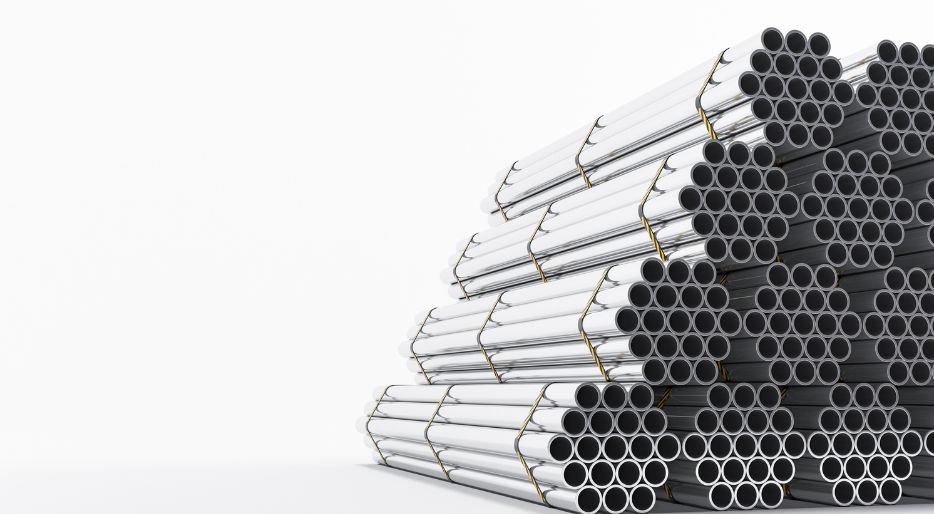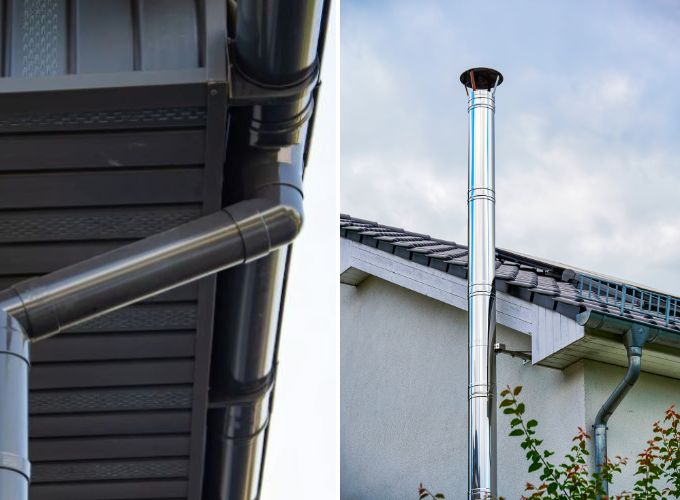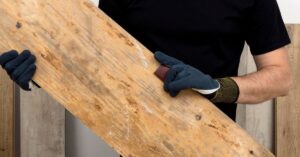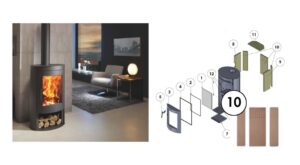
Although we enjoy the warmth of the fireplace, the odors can be unpleasant. With simple tricks like vinegar, salt, or baking soda, you can keep your home fresh and cozy.

Why is choosing the right flue pipe for your wood stove so important?.
When it comes to heating your home with a wood-burning stove, most people focus on the appliance itself. However, there’s a component that’s just as important—if not more so: the smoke exhaust pipe. Choosing the right pipe isn’t just a technical matter; it has a direct impact on your safety, energy efficiency, and air quality indoors.
A poor choice can lead to condensation, smoke leaks, heat loss, or even fires. That’s why deciding between stainless steel pipes or vitreous enamel pipes is not something to take lightly. It’s the foundation of an effective, safe, and long-lasting heating system.
Stainless steel flue pipes: durability and long-term safety.
Stainless steel chimney pipes are a strong, reliable option, ideal for demanding or frequent-use installations. Made from alloys including chromium and nickel, they’re designed to resist corrosion, high temperatures, and soot or creosote buildup.
Advantages of stainless steel pipes:
High resistance to corrosion and oxidation. Ideal for humid environments or outdoor installations.
Extreme durability. Built to last for decades without warping or deteriorating, even with daily use.
Low maintenance. The smooth inner surface prevents soot buildup, improving draft and reducing cleaning frequency.
Compatible with double-wall insulated systems. Helps prevent hazardous condensation and improves the system’s thermal efficiency.
Excellent fire resistance. In case of overheating or flare-ups, they retain their structural integrity.
Disadvantages of stainless steel pipes:
Lower heat retention. They cool quickly once hot smoke stops flowing through.
Limited thermal insulation if single-walled. Increases the risk of condensation unless the proper model is selected.
Higher price. Though more expensive upfront, their longevity makes them a cost-effective long-term investment.
Vitreous enamel pipes: design and thermal efficiency.
Vitreous enamel pipes are made of carbon steel with a high-temperature enamel coating. This coating creates a glossy, heat-resistant surface that’s both functional and visually appealing. They’re particularly suitable for indoor installations where the pipe is visible and protected from the elements.
Advantages of vitreous enamel pipes:
Better heat retention. The ceramic coating absorbs and slowly releases heat, keeping your space warm even as the fire dies down.
Excellent thermal insulation. Improves stove efficiency and reduces wood consumption.
Aesthetic appeal. The glossy black or anthracite finish looks great in modern or rustic interiors.
Easy to install. Most systems use intuitive, clean-fit joints.
Disadvantages of vitreous enamel pipes:
More fragile. Susceptible to cracks from impact or sudden temperature changes.
More prone to corrosion if damaged. Moisture can reach the steel core if the enamel is chipped.
Requires more frequent cleaning. Enamel can lose its shine or become stained if not maintained properly.
Not recommended for outdoor sections. Unless using a double-wall version, these are meant for indoor use only.

Which one to choose? It depends on your installation and priorities.
Is your flue pipe going through the exterior wall or a humid area like a basement or attic?
Then the stainless steel pipe (preferably double-wall) is the safest choice. It withstands weather, frost, and thermal changes without compromising performance. It also prevents dangerous condensation buildup.
Is your flue pipe visible in the living room and you care about aesthetics?
Go for vitreous enamel. It adds style and holds heat better, which is ideal for short, straight indoor runs with good draft.
Are safety and proper draft your top priorities?
Check out this visual installation guide:
How a chimney pipe should be installed correctly
Proper installation is just as crucial as choosing the right pipe. Avoid elbows, horizontal runs, or unsealed joints, and ensure at least 3 meters of vertical chimney without interruption.
Safety: the one detail you can never overlook.
A correct setup isn’t optional—it’s essential if you want to avoid real risks. Here are the key rules:
Always hire a certified professional. Proper draft, safe clearances, and airtight joints are critical.
Never use flexible or aluminum pipes. They’re unsafe and don’t comply with smoke evacuation regulations.
Avoid horizontal runs or unnecessary bends. The fewer obstacles, the better the draft and the lower the risk of smoke entering your home.
Annual cleaning is a must. Just 3mm of soot buildup can reduce thermal performance by over 25% and become flammable.
Conclusion: the best option is the one that suits your actual needs.
There’s no one-size-fits-all solution. Your decision should depend on whether your priority is aesthetics, safety, efficiency, or durability. The important thing is that both pipe types are compatible with Panadero wood stoves, and you’ll find them in our online shop with a range of sizes, finishes, and solutions for both indoor and outdoor use.
Not sure which one to choose?
Get in touch. Our team will help you make the right decision so you can enjoy the warmth of your wood stove with the peace of mind that everything is done right.
Explore our wood stoves and accessories at www.panadero.com.

Although we enjoy the warmth of the fireplace, the odors can be unpleasant. With simple tricks like vinegar, salt, or baking soda, you can keep your home fresh and cozy.

How to avoid dust in the house when using a wood stove: tips and tricks for a clean and healthy home

Learn how to remove mould from your wood for use by following the steps in this article.

All you need to know: what it is, uses and benefits of wood stoves
To provide the best experiences, we use technologies such as cookies to store and/or access device information. Consenting to these technologies will allow us to process data such as browsing behavior or unique identifiers on this site. Not consenting or withdrawing consent may adversely affect certain features and functions.

From December 19 to January 6, order a wood stove and receive the Helix log holder for free.